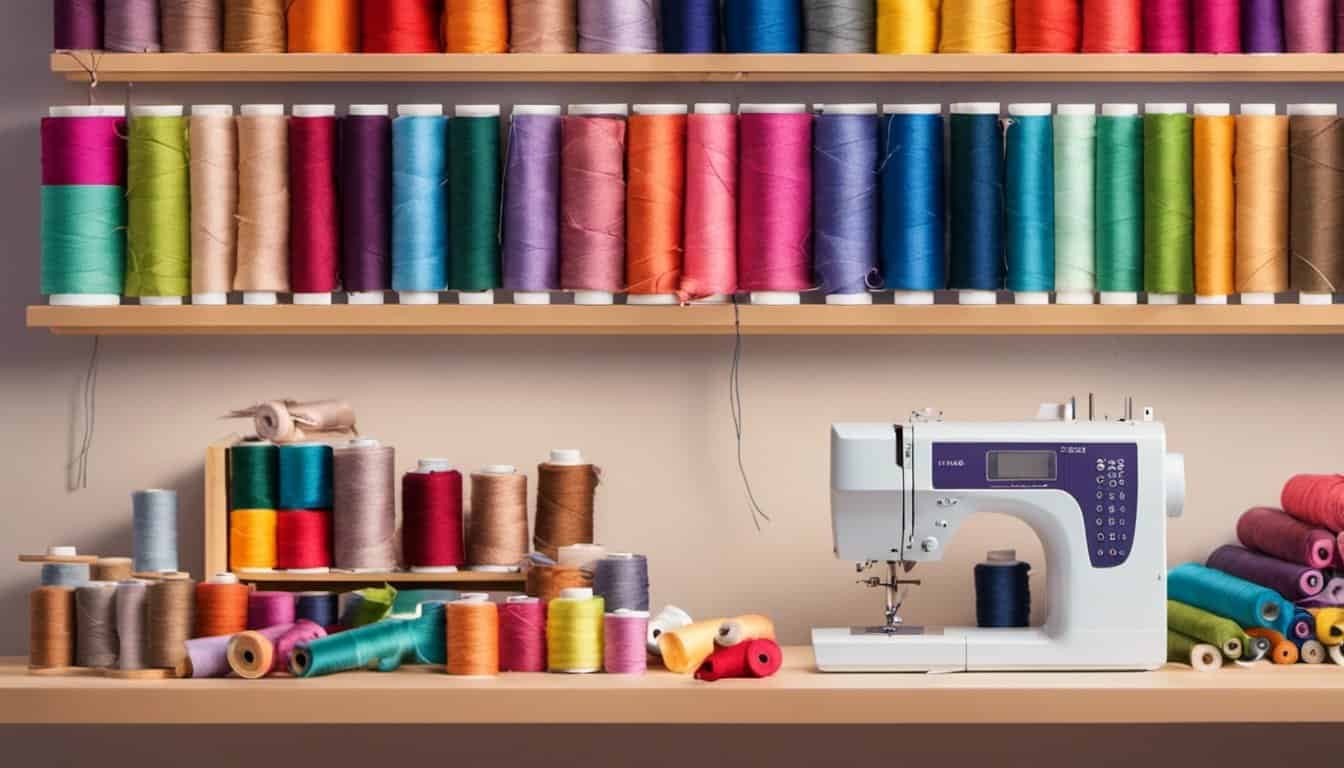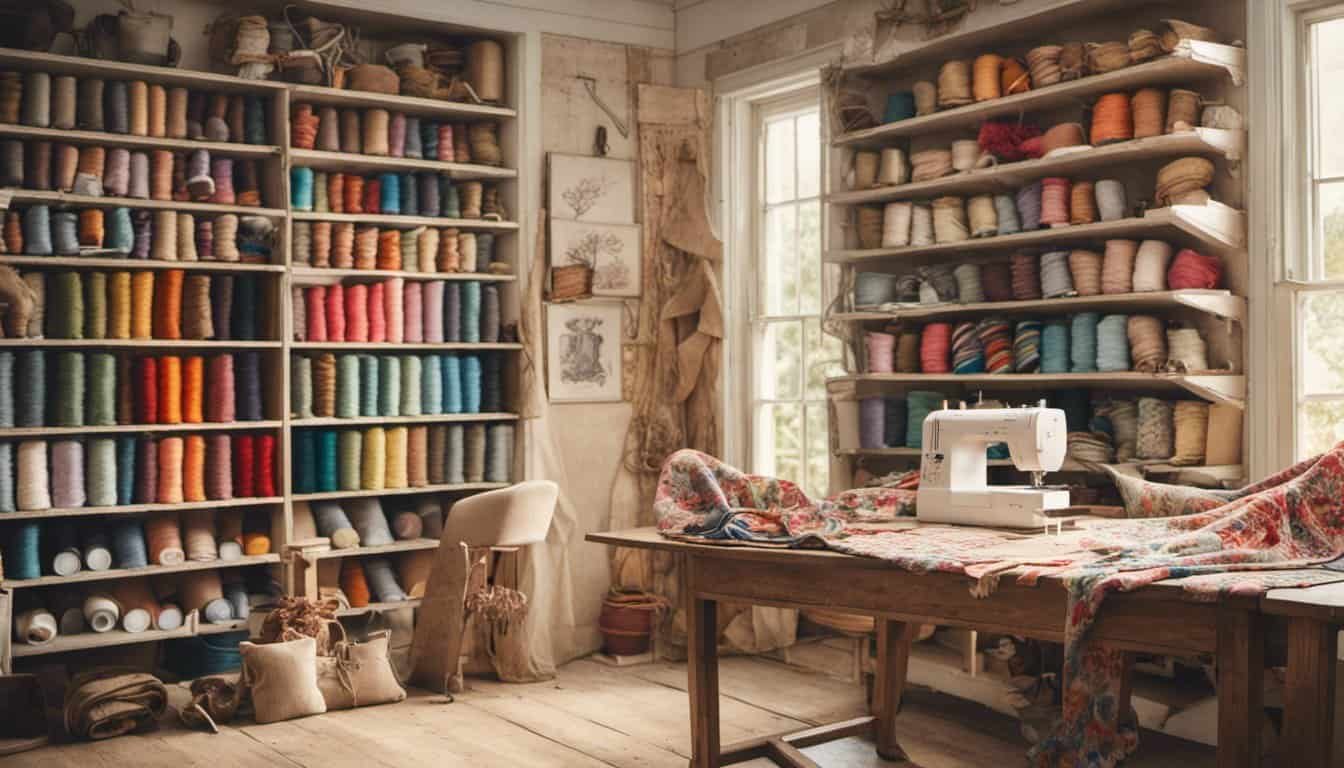Ever wondered how to give your sewing projects that professional finish? Using a double needle might be just the trick you need. This versatile tool can elevate your stitching game, creating parallel lines that add both durability and style to your fabric.
Understanding the Double Needle
A double needle, also known as a twin needle, is an essential tool for achieving a professional finish in sewing projects. It creates parallel rows of stitches, enhancing both durability and style.
What Is a Double Needle?
A double needle features two needles attached to a single shaft. These needles stitch simultaneously, forming two parallel lines on the top side and a zigzag pattern on the underside. Double needles come in various widths and sizes, suitable for different fabric types and projects. For example, you might use a 2.5mm needle for lightweight fabrics or a 6mm needle for heavier materials.
Benefits of Using a Double Needle
Professional Finish: Double needles create neat, uniform stitches, giving your sewing projects a polished look similar to ready-to-wear garments.
Increased Durability: The parallel stitches add strength to seams, especially useful for activewear, denim, and other heavy fabrics.
Versatility: You can use double needles for hemming, decorative stitching, and even heirloom embroidery. They work on various fabrics, offering flexibility for different projects.
Efficiency: Stitching two rows simultaneously saves time, making your sewing process faster and more efficient.
Stretchable Seams: The zigzag pattern on the underside allows seams to stretch, ideal for knit fabrics where elasticity is important.
Setting Up Your Sewing Machine
To use a double needle, you need to set up your sewing machine correctly. Follow these steps to ensure your machine works with a double needle.
Choosing the Right Double Needle
Select the appropriate double needle for your fabric and project. Double needles come in various sizes and types. For lightweight fabrics, use a smaller needle (e.g., 2.0/80), and for heavier fabrics, use a larger one (e.g., 4.0/100). Check the needle package for details.
Threading the Double Needle
Threading a double needle requires precision. First, install the double needle in your machine. Most machines accommodate a double needle, but consult your manual to be sure. Next, use two spools of thread. Place the spools on the spool pins. Make sure the threads don’t tangle by keeping them separated and threading each needle individually. Follow your sewing machine’s threading path for each thread.
Ensure the bobbin is in place and correctly threaded. Test your setup by slowly stitching a few lines on scrap fabric. Adjust tension settings if necessary to achieve smooth, even stitches.
With these steps, your sewing machine is ready for double-needle stitching.
Basic Techniques for Double Needle Stitching
Double needle stitching enhances the quality of your sewing projects. Whether you’re working on hems, decorative seams, or other finishing touches, understanding basic techniques is essential.

Straight Stitching
Straight stitching with a double needle creates parallel stitch rows. To begin, set your machine to a straight stitch setting. Insert the double needle, then thread both needles using two spools of thread. Place the fabric under the presser foot and align the edge with your guide. As you sew, ensure even and consistent speed. This technique is ideal for hemming garments and adding a polished look to seams.
Zigzag and Decorative Stitches
Zigzag and decorative stitches add flair to your projects. Switch your machine to a zigzag or decorative stitch setting. Confirm that the double needle’s width aligns with the machine’s capabilities. Thread the needles, then test the stitch on a fabric scrap. Adjust the tension settings if necessary. Use decorative stitches on knits, costumes, and crafts to enhance visual appeal. Zigzag stitches can also secure fabric edges, preventing fraying.
Understanding these basic techniques for double needle stitching will elevate your sewing work, making your projects stand out with professional finishes.
Advanced Projects Using Double Needle
Double needle stitching isn’t just for basic hems and seams; it’s also perfect for advanced projects that elevate your sewing to a professional level.
Hemming Garments
Double needle stitching can effortlessly create neat and durable hems for garments. Use this technique to hem dress pants, skirts, and sleeves for a polished finish. When hemming, ensure even tension to prevent tunneling. Hem knit fabrics like jersey or interlock with a slight stretch to retain fabric flexibility.
Adding Decorative Touches
« Shockingly Affordable! Discover How Much a Sewing Kit Really Costs – You Won’t Believe the Prices
Unlock the Secret: How Do You Make Sewing on Little Alchemy? Find Out Now »
Double needle stitching adds sophisticated decorative touches to garments and home decor. Use contrasting threads for a striking effect on cuffs, collars, and pocket edges. Apply decorative stitches such as scallops or waves to enhance plain fabrics. Combine different stitch patterns to create unique details on clothing, table runners, or quilts.
These advanced projects showcase the versatility and professionalism that double needle stitching brings to your sewing endeavors. Use it to explore new creative possibilities and achieve exceptional results.
Troubleshooting Common Issues
Using a double needle can elevate your sewing projects, but you may encounter some common issues along the way. Understanding how to troubleshoot these problems ensures your projects come out perfectly.
Skipped Stitches and Thread Tension Problems
Skipped stitches and thread tension problems often arise with double needle stitching. Ensure your machine is properly threaded for each needle, as improper threading can cause these issues.
Check the following:

- Thread Path: Verify that both threads follow the correct path through the tension disks.
- Needle Compatibility: Confirm that the needle size matches your fabric. Lightweight fabrics need smaller needles, while heavier fabrics require larger sizes.
- Bobbin Thread: Rewind the bobbin if you notice irregular tension or skipped stitches. An evenly wound bobbin contributes to better stitch quality.
If threads are still skipping, adjust the tension settings. Lower the upper thread tension slightly to accommodate the double needle’s pull on the fabric. Testing on scrap fabric can save your main project from frustration.
Breaking Needles and Snagged Fabric
Breaking needles and snagging fabric can interrupt a project unexpectedly but are easily preventable.
Consider these points:
- Needle Type: Use a twin needle designed for your specific fabric type. Denim needles for heavy fabrics and ballpoint needles for knit fabrics help avoid breakage.
- Speed: Slow your sewing speed. High speeds increase the chances of needle breakage.
- Fabric Handling: Hold the fabric taut, but don’t pull it through the machine. Let the feed dogs guide it naturally to prevent snagging.
Check for fabric or thread buildup around the needle plate and bobbin area. Cleaning these areas regularly prevents material snagging and ensures smoother stitching.
By addressing these common issues, your double needle stitching projects will look professional and polished, avoiding the pitfalls that often come with twin needle use.

Conclusion
Mastering double needle stitching can truly elevate your sewing projects, giving them a polished, professional look. By setting up your machine correctly and choosing the right tools, you’ll avoid common pitfalls like skipped stitches and broken needles. Remember to adjust your tension settings and handle your fabric with care to achieve the best results. With a bit of practice and attention to detail, you’ll be able to tackle any double needle project with confidence and finesse. Happy sewing!

















